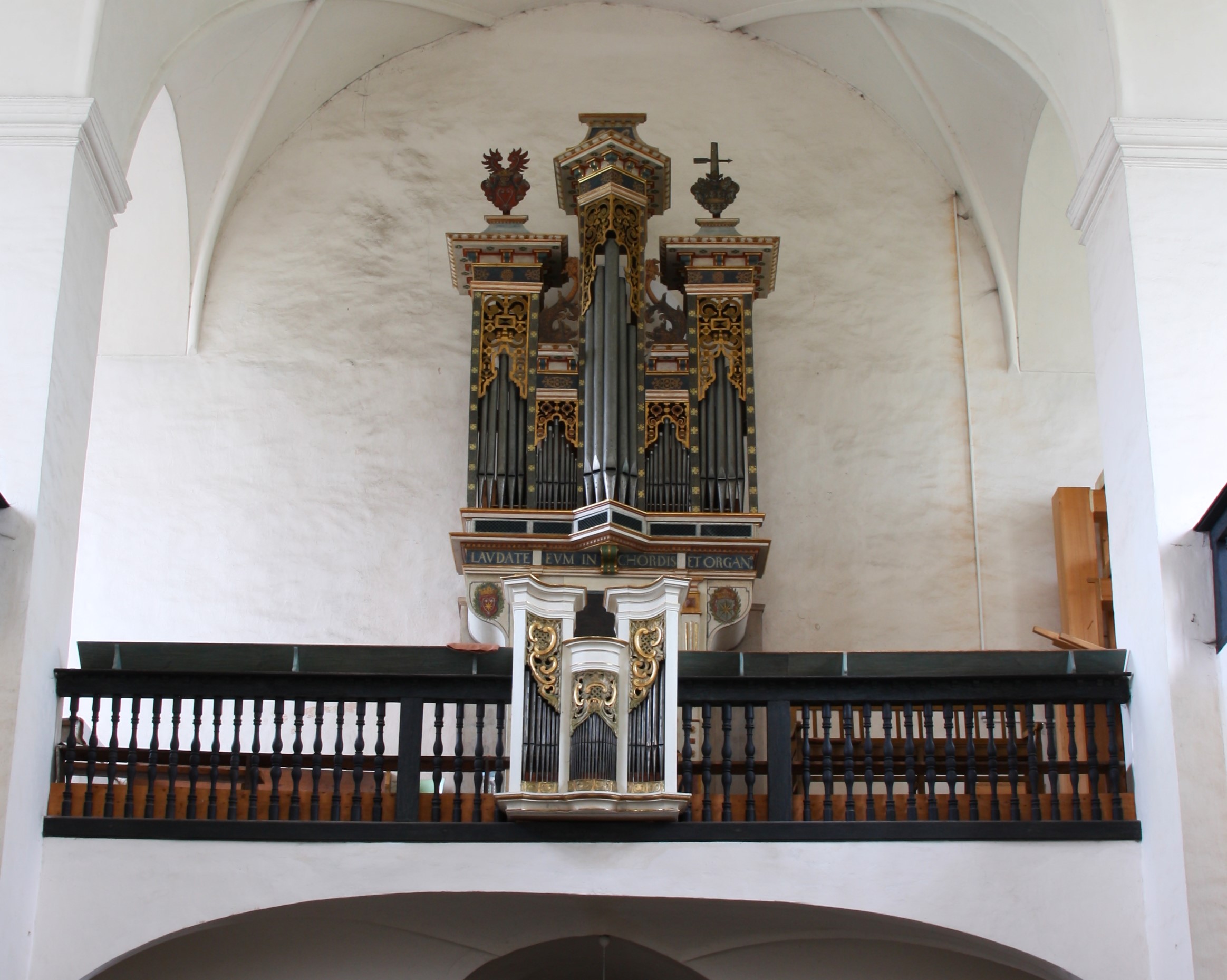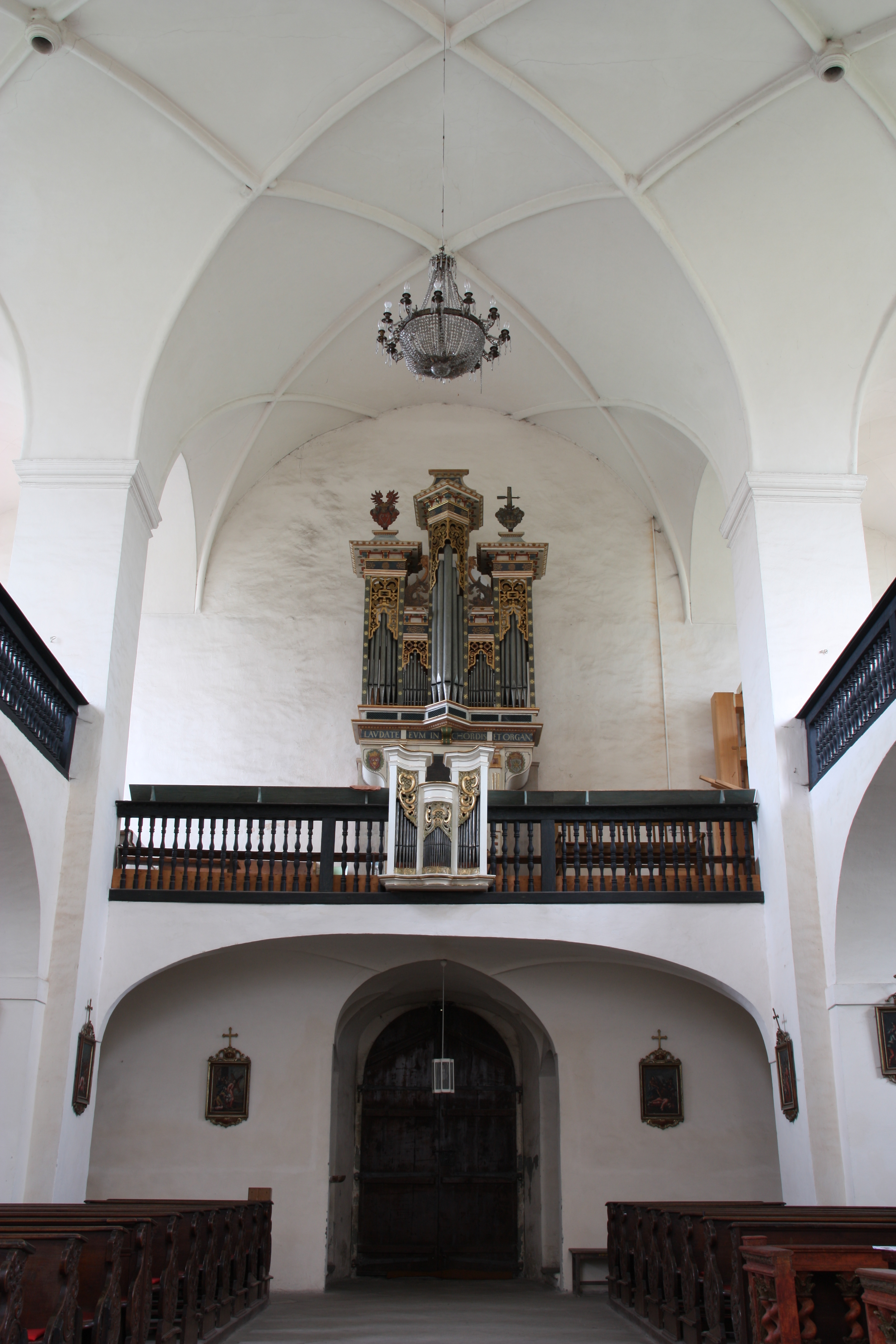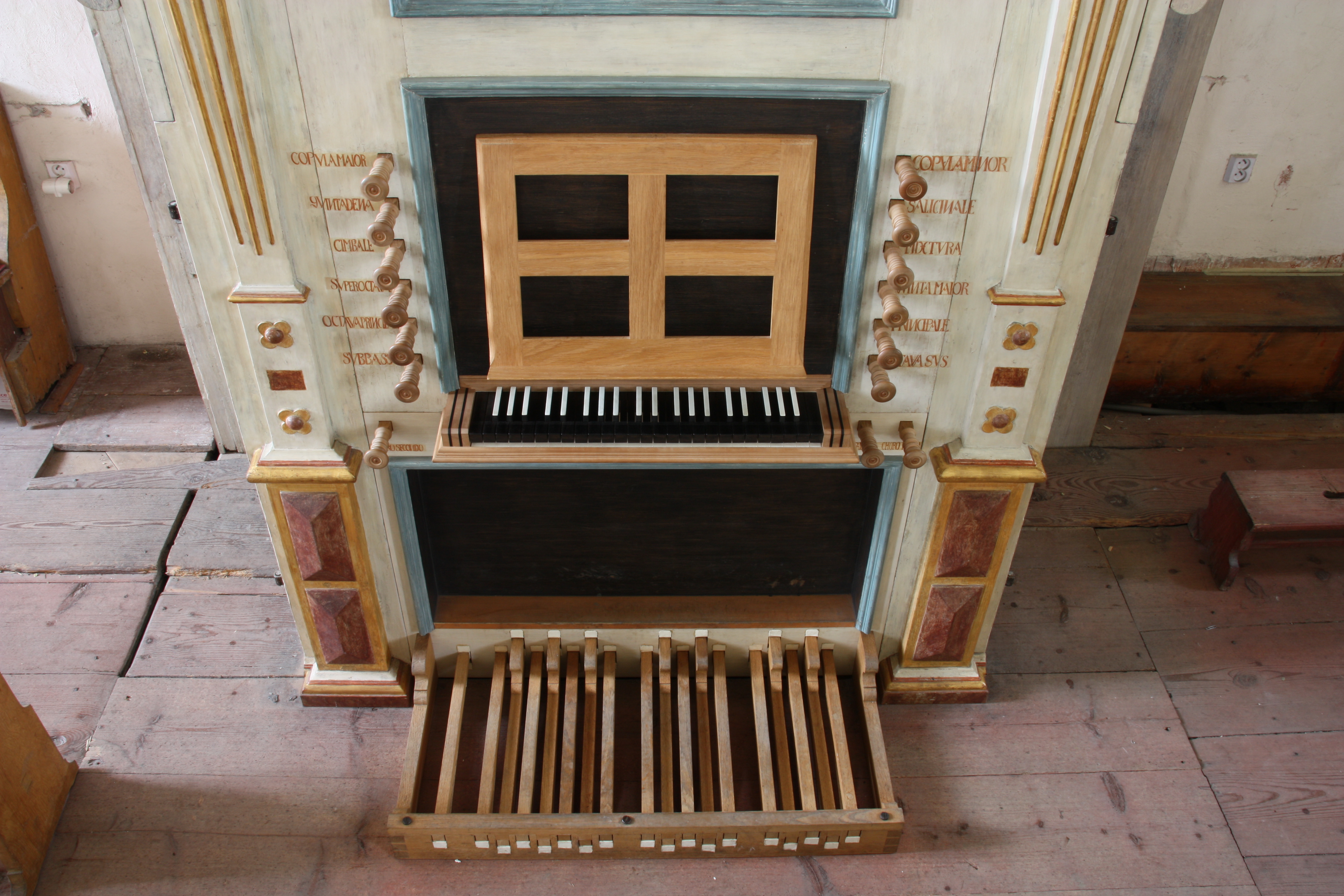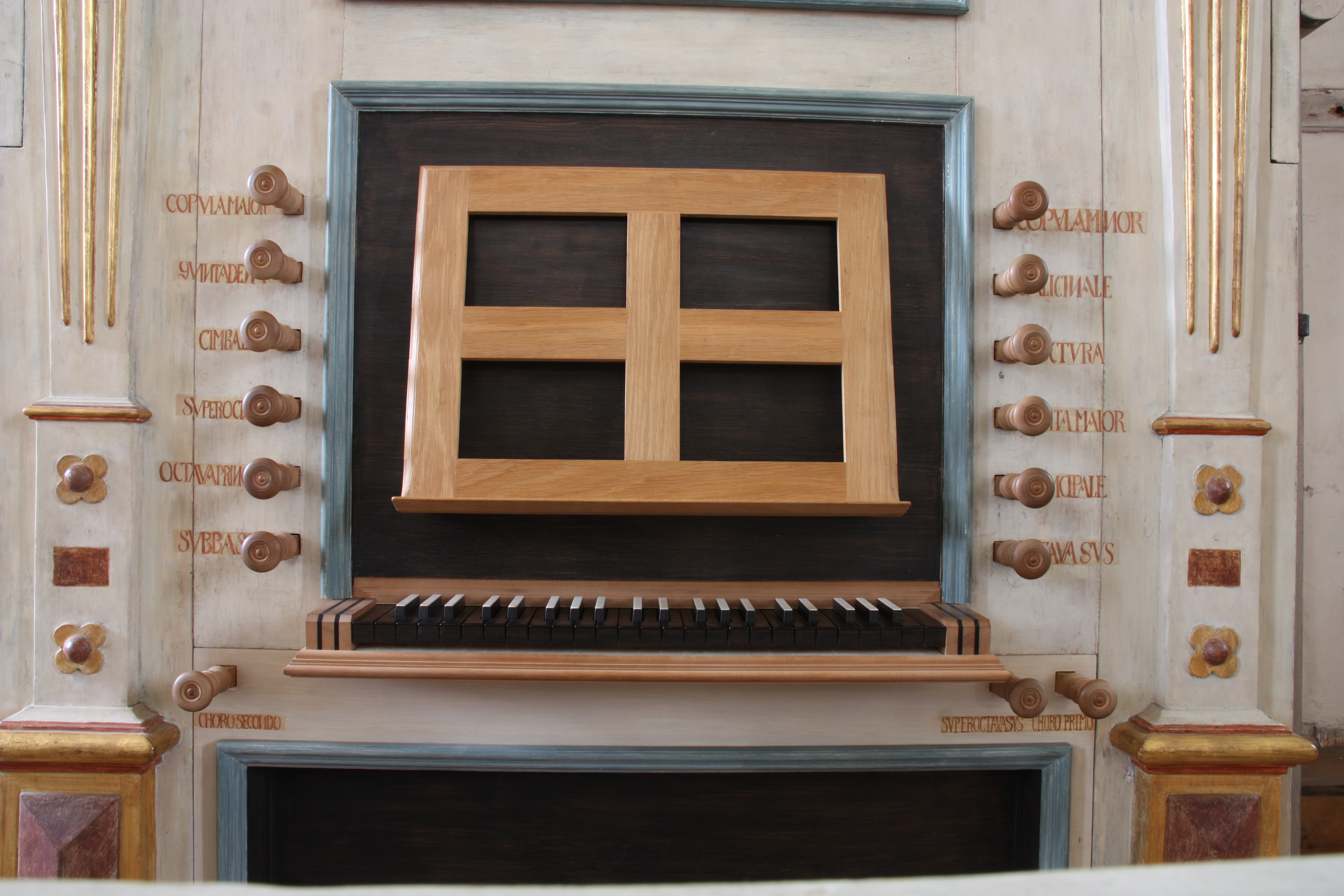Smečno, Kostel Nejsvětější Trojice
| Builder | Anonymous |
|---|---|
| Year | ca. 1587 |
| Period/Style | Renaissance |
| Stops | 13 |
| Keyboards | 1+P |
| Keyaction | tracker/mechanical |
| Tuning | 1/4 Comma Meantone |
| Sampleset |
Available
 , sampled by
Sonus Paradisi
, sampled by
Sonus Paradisi
|
The renaissance instrument of the Holy Trinity church in Smecno is the oldest preserved and playable organ in the Czech Republic.
The instrument was built around the year 1587. The date of construction may be easily recognized by the heraldry of the donors depicted on the organ chest and from extant archive materials. The organ builder is unknown. It is known that the instrument was damaged during the thirty years war in 1631 when the soldiers of the Swedish army stole the Regal - the only reed stop. There has been one major rebuild during its history: in the late Baroque era, in 1775, a small Rückpositiv was added by Jan Rusch from Litomerice and some stops were changed.
A partial reconstruction of the organ to the renaissance state was done by Dusan Doubek before 1999. The baroque Rückpositiv was removed and the single manual in the renaissance case was renewed. The original stop names were preserved on the stop jambs and also a large number of original pipes was found inside the organ. This allowed the reconstruction of the special Renaissance sound of the individual stops. However, this reconstruction remained only partial, as the instrument was left at rather high pressure (due to newer pedal pipes - the pedal was not a part of the reconstruction job of Doubek) and therefore the pipes had rather harsh sound.
During the years 2009-2010, the reconstruction of the organ continued. The baroque Rückpositiv is now fully functional, although it remained detached from the renaissance organ having its own keyboard and drawstops opposite to the main case. Organist, therefore, cannot play the two manuals at the same time. Either the renaissance organ can be played alone, or the Positiv alone.
The composition of the renaissance instrument
The renaissance single manual is built on two separate windchests. The first contains only the principal choir while the other the flutes. There are ventils allowing either of the windchests to be muted. They may be engaged by drawstops called in italian style "Choro primo" and "Choro secondo". This makes it possible to switch the sound of the organ quickly between the principal plenum and tiny flutes, thus imitating a two manual performance. The table shows how the stops are distributed on the windchests. Before you start to play, please do not forget to pull either the Choro primo or the Choro secondo drawstop to hear any sound at all.
The instrument was built around the year 1587. The date of construction may be easily recognized by the heraldry of the donors depicted on the organ chest and from extant archive materials. The organ builder is unknown. It is known that the instrument was damaged during the thirty years war in 1631 when the soldiers of the Swedish army stole the Regal - the only reed stop. There has been one major rebuild during its history: in the late Baroque era, in 1775, a small Rückpositiv was added by Jan Rusch from Litomerice and some stops were changed.
A partial reconstruction of the organ to the renaissance state was done by Dusan Doubek before 1999. The baroque Rückpositiv was removed and the single manual in the renaissance case was renewed. The original stop names were preserved on the stop jambs and also a large number of original pipes was found inside the organ. This allowed the reconstruction of the special Renaissance sound of the individual stops. However, this reconstruction remained only partial, as the instrument was left at rather high pressure (due to newer pedal pipes - the pedal was not a part of the reconstruction job of Doubek) and therefore the pipes had rather harsh sound.
During the years 2009-2010, the reconstruction of the organ continued. The baroque Rückpositiv is now fully functional, although it remained detached from the renaissance organ having its own keyboard and drawstops opposite to the main case. Organist, therefore, cannot play the two manuals at the same time. Either the renaissance organ can be played alone, or the Positiv alone.
The composition of the renaissance instrument
The renaissance single manual is built on two separate windchests. The first contains only the principal choir while the other the flutes. There are ventils allowing either of the windchests to be muted. They may be engaged by drawstops called in italian style "Choro primo" and "Choro secondo". This makes it possible to switch the sound of the organ quickly between the principal plenum and tiny flutes, thus imitating a two manual performance. The table shows how the stops are distributed on the windchests. Before you start to play, please do not forget to pull either the Choro primo or the Choro secondo drawstop to hear any sound at all.
| Manual | Pedal |
|---|---|
| Principale 8' (Prospekt) (1) | Subbasus 16' |
| Copula maior 8' (2) | Octavasus 8' |
| Salicinale 8' (2) | Superoctavasus 4' |
| Octava principale 4' (1) | |
| Copula minor 4' (2) | |
| Quintadena 4' (2) | |
| Quinta maior 2 2/3' (1) | |
| Superoctava 2' (1) | |
| Mixtura 3x 1' (1) | |
| Cimbale 2x 1/2' (1) |
Ballo del granduca Front
0:00
0:00
1488250417-Barafostus dream Vanessa Jorgensen
0:00
0:00
1355364873-Gastritz - Non es bonum
0:00
0:00
https://www.sonusparadisi.cz/en/organs/czech/smecno.html
 Pipe Organ Map
Pipe Organ Map


